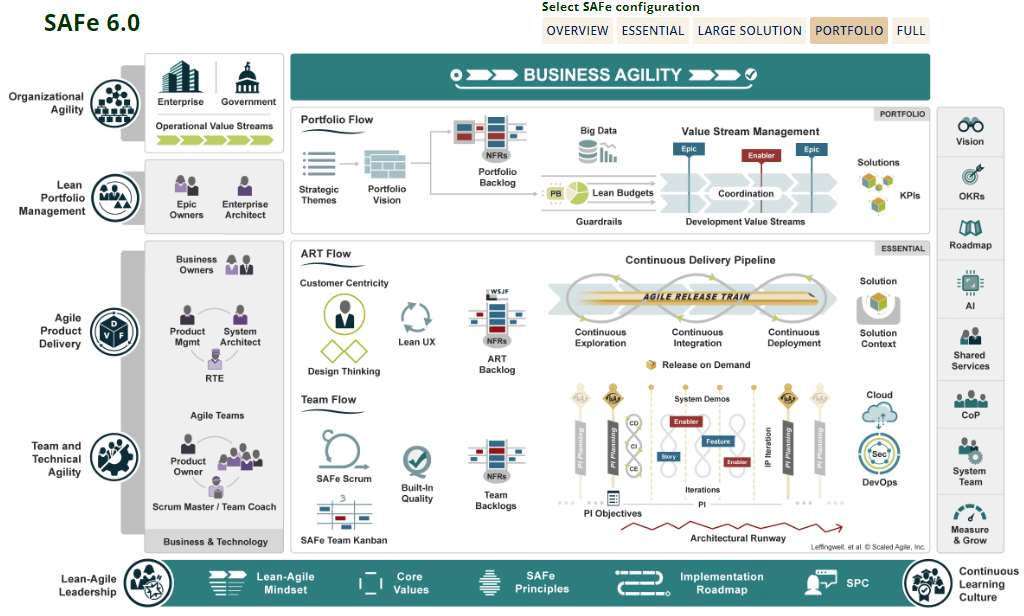Agile Project Management empowers teams to adapt and respond swiftly to evolving requirements, while DevOps enables collaboration and integration between development and operations teams.
Together 🤝, they form a powerful alliance, streamlining the delivery of technology solutions.
This article will explore the symbiotic relationship between DevOps and Agile Project Management and how they synergistically drive successful technology delivery.
Aligning for Efficient Technology Delivery
Agile methodologies and DevOps principles align seamlessly to enable efficient technology delivery, often supported by robust tools for project management to track progress, facilitate collaboration, and enhance productivity. Let’s explore how they work together.
#1. Continuous Integration and Delivery
If you have an agile project, then you emphasize frequent iterations and incremental development. That’s what makes you fast-responding to changes coming from the client or even from the outside world.
DevOps complements this by promoting continuous integration and delivery (CI/CD) practices. By automating the build, testing, and deployment processes, teams can quickly deliver software updates. For example, developers use tools like Jenkins or GitLab to automatically trigger builds and tests whenever new code is committed, ensuring that changes are integrated smoothly and delivered to production without delay.
Look, you can have an agile project and do regular ceremonies (like daily standups, backlog refinement, or sprint demos) with the team. But if you cannot deliver those outputs fast, it’s not agile work from the outside view. Your clients will nervously wait for the next fresh increment they can immediately try and put into practice, but instead, what they will get is a slow release cycle, just like the waterfall project would give them as well.
Successful DevOps integration is a key factor for a successful agile project. One can’t exist without the other one, and if you have only one of those, don’t tell yourself you are agile.
#2. Cross-functional Collaboration

Agile methodologies encourage cross-functional teams, where members from different disciplines (and countries, for that matter) work together towards a common goal. DevOps takes this collaboration a step further by breaking down silos between development, operations, and other stakeholders. It breaks even the ever-so-common silos between the different development teams, which (surprisingly so for the external reviewer) shall work on the same goal.
By fostering effective communication and shared responsibilities, teams can address issues promptly and make informed decisions. For instance, developers and operations engineers can collaborate closely to identify and resolve performance bottlenecks, resulting in faster and more stable software releases.
#3. Infrastructure as Code

Agile methodologies prioritize adaptability and responsiveness to changing requirements. DevOps embraces this mindset by treating infrastructure as code (IaC).
With tools like Terraform or Ansible, you can define and manage infrastructure programmatically, enabling teams to provision and configure resources rapidly. This approach ensures consistency and repeatability across environments. This greatly reduces the risk of deployment errors and enables efficient scaling as needed.
#4. Feedback Loops and Continuous Improvement
Agile methodologies emphasize the importance of feedback loops to drive continuous improvement. DevOps amplifies this by incorporating feedback loops at every stage of the software delivery process.
By collecting and analyzing metrics (which are ideally gathered automatically), you can identify areas for improvement and make data-driven decisions. For example, monitoring tools like Prometheus or New Relic can provide insights into application performance, enabling teams to optimize code and infrastructure for better efficiency and user experience.
Key Considerations and Challenges When Implementing Agile Project Management With DevOps
Building up a successful agile project that has, at the same time, correct DevOps practices is not an easy task. Many big corporations struggle to achieve that despite having practically unlimited budget resources.
Here are some practical areas that significantly impact the transformation of a project to adopt Agile and DevOps practices.
Leadership Management Support

Obtaining buy-in and support from leadership and management is crucial for a successful Agile and DevOps transformation. They must understand the benefits, provide resources, and actively promote adopting these practices.
Management must be at the forefront of every step of such an initiative. If the teams don’t see and trust that there is enough determination from the leadership to succeed in such an initiative, they will hardly convince themselves it is worth the effort.
Therefore, if you want to have an agile team, be agile on your side in the first place.
Agile Project Management Framework

Implementing a well-defined Agile project management framework, such as Scrum, Kanban, or even Scaled Agile Framework (SAFe), is essential. This includes establishing clear roles and responsibilities, defining iterative planning and delivery processes, and facilitating effective communication and collaboration.
But it’s far more than that, and it’s about changing the mindset (of everyone). That’s exactly the reason why it is so difficult to put into practice.
Also read: Agile Vs. Scrum: Know their Key Difference
Agile Mindset and Training
Exactly – developing an agile mindset among team members is vital. You won’t achieve that without comprehensive training and coaching on Agile principles, practices, and methodologies inside the teams to understand and embrace the Agile way of working.
Continuous Integration and Deployment
Setting up a robust CI/CD pipeline is critical for achieving frequent and reliable software releases. This involves automating build, test, and deployment processes, ensuring code quality, and enabling rapid feedback collection.
CI/CD pipeline will enable you to one-click releases, automated environment stacks creation, and data loading. All in a fraction of the time you would need otherwise.
Infrastructure Automation and Configuration Management
Implementing infrastructure automation and configuration management tools like Ansible or Puppet gives your team a tool for managing infrastructure as code. This enables teams to provision, configure, and manage infrastructure resources consistently.
DevOps Collaboration and Communication
Promoting collaboration and communication between development, operations, and other stakeholders is your ultimate target. It’s followed by establishing cross-functional teams, enabling effective communication channels, and encouraging shared responsibilities to facilitate seamless integration of Agile and DevOps practices.
Often, people think they have DevOps practices if they run successful automatic release pipelines. That’s only half of the truth. The other half is that you need to have active communication between different departments of the project, which is much harder to achieve, even though it does not require any deep technological skills (like the creation of the pipeline does).
Continuous Monitoring and Feedback

True agile project has robust monitoring and feedback mechanisms that are crucial for identifying issues, measuring performance, and driving continuous improvement.
This includes implementing monitoring tools, setting up alerts, and creating conditions for quick response and iterative enhancements.
Agile Metrics and Performance Measurement
Hoping that everything runs smoothly (even if everybody around says so) is not enough. It’s your priority to track relevant Agile metrics, such as velocity, lead time, and cycle time, to name a few.
If you are brave enough, you can even introduce some of the Team’s Morale metrics to your management (although that might not meet with an understanding well, especially if the leadership is more conservative than progressive).
The metrics will help you measure team performance and identify areas for improvement. This data-driven approach enables teams to make informed decisions and continuously optimize their processes.
Case Studies Illustrating the Benefits of Combining Agile Project Management and DevOps
Here are a few case studies illustrating the benefits of combining Agile project management and DevOps practices. Take it as proof that if done right, you are dressed for success.
#1. Spotify
The popular music streaming platform adopted Agile and DevOps practices to enhance its software delivery process.
By organizing their development teams into small, autonomous squads, they achieved a culture of ownership and collaboration. Spotify implemented continuous integration and deployment into the standard release practices so the teams could release new features and updates rapidly. The result was improved time-to-market, increased customer satisfaction, and the ability to quickly respond to market demands.
The key takeaway for other projects is to embrace cross-functional teams, continuous integration, and autonomous squads to drive innovation.
#2. Etsy
The online marketplace for handmade and vintage goods implemented Agile and DevOps practices to improve their software delivery and infrastructure management. They embraced a culture of experimentation and continuous improvement.
Developers deploy the code multiple times a day. By leveraging infrastructure automation and monitoring tools, Etsy achieved faster recovery from failures and improved system stability. The teams also emphasized sharing knowledge and collaborating across teams, leading to increased efficiency and innovation.
The key takeaway for projects that would like to inspire from this story is to give priority to a culture of experimentation, emphasize infrastructure automation, and promote knowledge sharing for enhanced stability and efficiency.
#3. Netflix
The global streaming giant adopted Agile and DevOps practices to support their continuous innovation and rapid growth. They implemented a microservices architecture, enabling independent development and deployment of services.
Netflix heavily automated their testing and deployment processes so they could release new features and updates frequently. By leveraging monitoring and feedback loops, they continuously optimized their services for performance and user experience. The result was improved scalability and enhanced customer satisfaction.
The key takeaways for inspiration are the implementation of microservices architecture, automating testing and deployment, and prioritizing continuous optimization for scalability and customer satisfaction.
#4. Amazon
The e-commerce and cloud computing giant used Agile and DevOps practices to drive their innovation and customer-centric approach.
They implemented a two-pizza team structure, where teams are small enough to be fed by two pizzas, promoting autonomy and accountability. Amazon heavily automated its infrastructure provisioning and deployment processes, enabling rapid scaling and efficient resource management. By prioritizing customer feedback and leveraging data-driven decision-making, Amazon continuously improved its services and maintained high customer satisfaction.
The key takeaway for inspiration here is the adoption of a two-pizza team structure to automate infrastructure provisioning and to prioritize customer feedback for innovation and customer-centricity.
#5. ING Bank
The global financial institution embarked on an Agile and DevOps transformation to enhance its software delivery and customer experience.
They implemented cross-functional teams and a culture of collaboration and continuous learning. ING Bank automated testing and deployment processes, enabling faster and more reliable software releases. They also have solid monitoring and feedback mechanisms and, with that, improved system stability and responsiveness.
The transformation resulted in reduced time-to-market and improved employee engagement.
The key takeaway here is to embrace cross-functional teams, automate testing and deployment, and prioritize continuous learning for improved time-to-market and customer satisfaction.
Practical Tips for Integrating Agile Project Management and DevOps in Technology Delivery

Finally, I’d like to highlight a few tips from the practice for integrating Agile project management and DevOps in technology delivery, along with some details on how to follow them.
#1. Monitor Your Infrastructure
Set up monitoring tools (like Prometheus or New Relic) to collect and analyze metrics on application performance, infrastructure health, and user experience.
If you think you can survive without solid monitoring tools, think again. As the infrastructure will get more robust over time, it will be much easier to get lost inside without such tools.
Establish alerts and dashboards to enable proactive monitoring and quick response to issues.
#2. Make Security a Priority
Integrate security and compliance practices into the development and deployment processes. Even if this is not exactly the kind of feature the client is asking for the most.
Conduct regular security assessments, implement secure coding practices, and ensure compliance with relevant regulations and standards.
#3. Do the Pilot Project Where Feasible
Try to begin by selecting a small, low-risk project to pilot Agile and DevOps practices integration. This allows you to experiment, learn, and refine your approach before scaling it to larger initiatives.
Adopt the pilot-first approach also to any other subsequent initiatives. It’s always better to bring something usable fast to production, even if it meets only a few requirements from the big list.
#4. Stakeholders First

Involve Stakeholders Early. Engage them as much as possible, including business representatives, operations teams, and end-users, from the beginning of the project. Collaborate with them to define requirements, prioritize features, and gather feedback throughout development.
#5. Automate Testing
Implement automated testing at various levels, including unit, integration, and end-to-end testing. Leverage frameworks like Selenium or Cypress for UI testing and tools like JUnit or pytest for unit testing.
Automated testing ensures code quality and reduces manual effort. But it also saves you plenty of time that you can invest into next features development, rather than boring platform-related support and maintenance tasks.
#6. Automate the Infrastructure
Utilize infrastructure automation tools (Terraform, Ansible, CloudFormation, etc.) to provision and manage infrastructure resources. Define infrastructure configurations as code, enabling consistent and reproducible deployments across environments.
This should be your first step in the development process. If the automation will be in place straight from the beginning, it is easier to expand on that as to additionally create it only once the infrastructure is already too robust.
#7. Always Focus on Continuous Delivery
Aim for continuous delivery (CD) by automating the deployment process. Use tools like Docker or Kubernetes for containerization and orchestration, enabling consistent and efficient deployments across different environments.
#8. Rely on Fast Feedback
Establish feedback loops with end-users and stakeholders to gather insights and validate assumptions. Leverage user feedback, analytics, and monitoring tools to drive iterative improvements and prioritize features based on real user needs.
#9. Collect and Evaluate Metrics
Define and track relevant Key Performance Indicators (KPIs) to measure the success of Agile and DevOps integration. Examples include lead time, deployment frequency, mean time to recovery (MTTR), and customer satisfaction. Regularly review these metrics to identify bottlenecks and areas for optimization.
To follow these tips in practice, start by assessing your current processes and identifying areas for improvement. Gradually introduce Agile and DevOps practices, focusing on one or two areas at a time.
Encourage collaboration and provide training and support to team members. Implement automation tools and processes, ensuring they are integrated into the development workflow.
Final Words
Integrating Agile project management and DevOps practices is a transformative journey that holds immense potential for organizations seeking to streamline their technology delivery.
By combining the iterative and adaptive nature of Agile methodologies with the collaborative and automated principles of DevOps, teams can achieve remarkable results.

